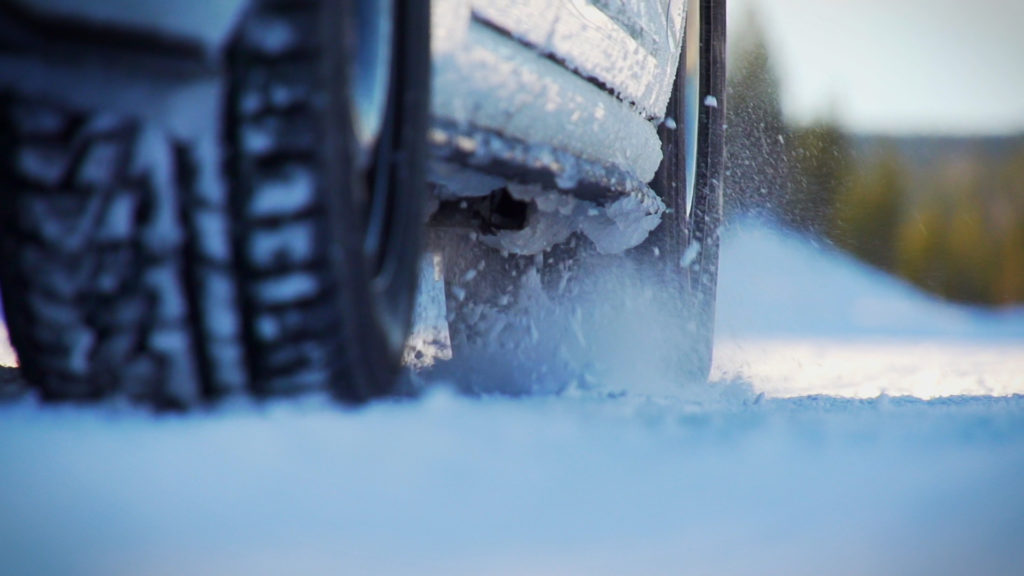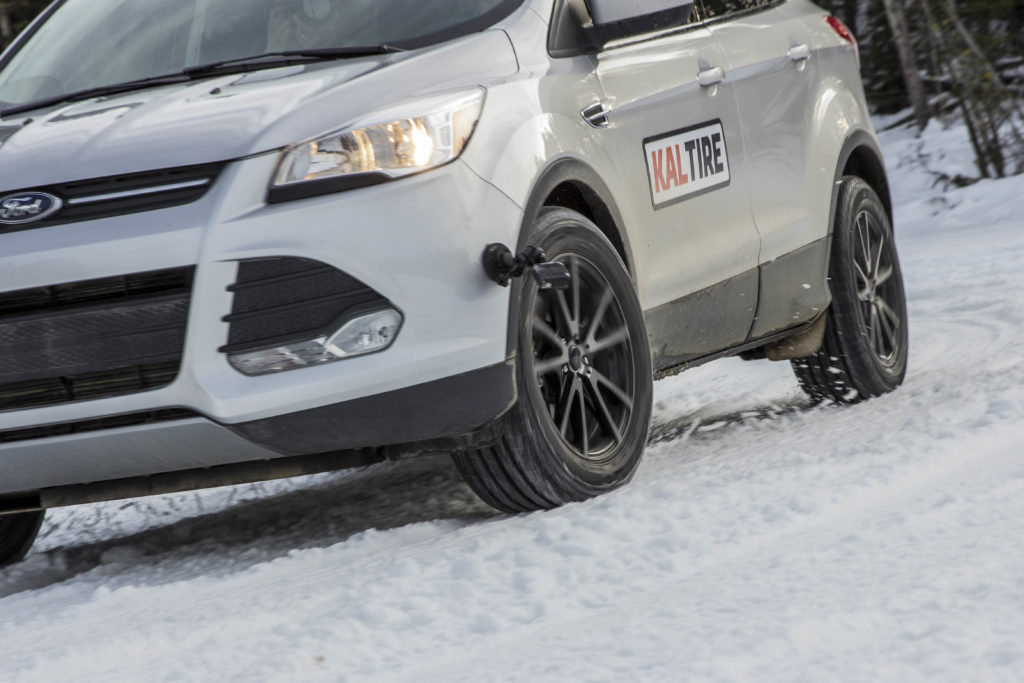
Staying safe in the car – obviously a priority, especially when we have children. I won’t even back out of the driveway if the older kids don’t have their seat belts on. That is not a question. The baby’s seat straps are always double checked, no matter how cold it is, or how full my hands are. But what about beyond that? Making sure the vehicle is safe needs to be a higher priority. I am all about cutting corners where ever I can for expenses, and a brand new set of tires is another thing to budget for, but before you put it at the bottom of the priority/buying list this winter, there are some things you need to know about driving on our icy Canadian roads if you want to keep everyone safe.
Here are some myths and facts about winter tires:
1. MYTH: All season tires are good for all seasons.
FACTS: Quote from Transport Canada: “At temperatures below +7C, all-season and summer tires begin to lose elasticity, resulting in reduced traction”
Even if there is not a lot of snow, it is not about the precipitation when it comes to the right choice for safe tires. It has to do with the temperature. They call all-season tires “3 season tires” because they are NOT winter tires. All-season tires are made with less natural rubber, so they stiffen once temperatures go below +7, whereas winter tires give you optimal grip at lower temperatures because they stay flexible due to the special compound they are made with.
2. MYTH: If you have all wheel drive or 4 wheel drive, your vehicle is safe enough for our roads in the winter, regardless of the tires you have.
FACTS: Four wheel drive (4×4) and all wheel drive (AWD) mean that all four of your tires receive power from the engine, so the wheels all turn at the same speed and propel the vehicle forward. AWD has a center differential and 4WD has two different drive trains and a transfer case; both features provide torque that is split evenly and applied to all four wheels. These are great features to have on a vehicle, and are textbook considerations if you live somewhere, or drive somewhere with unpaved dirt roads. However, these features will not help with grip or traction on ice or snow – that will solely depend on the type of tires you have on your vehicle. The electronic systems that control these features will not help you if you approach a slippery intersection and have 3-season tires that have gone stiff in the cold temperatures, like those we experience here in Alberta.
3. MYTH: Mud and Snow Tires have the same qualities and provide the same standards of safety for winter roads as winter tires do.
FACTS: Mud and Snow Tires are “all-season” tires. The only difference between M+S tires and a summer tire, is the space between the tread, so they can repel mud and snow; but they are not made of the same compound as winter tires, which is needed for temperatures below +7C, otherwise they harden, just like summer tires do in those temperatures and lower. They do not have the winter tire mountain snowflake symbol because they do not meet the traction requirements to be considered a true winter tire.

Kal Tire has a great online tire service – choose your tire (if you don’t know your size, search by vehicle type), choose the brand, price and features – and book an appointment with whichever location is most convenient for you – all online. I just love doing everything online. Easier than trying to make a phone call while my two year old screams in the background, or worse yet, bringing her with me to shop around! Get it all done, book an appointment, keep your family as safe as you can. Winters here suck, but they can be so much worse if you have to deal with a damaged vehicle, injuries, or tickets.
Last year I got a ticket on 97 street for “running a red light” – this ticket could not have come at a worse time, close to Christmas – and I was driving less than 30 km/hour! The light turned yellow, I had plenty of space to slow down and stop, or so I thought – the road was so slippery, (and I had all season tires), that even though I was driving that slow, I continued to slip into the intersection as I attempted to stop, far enough to get a red light ticket from the automatic camera at the light. I went into the courthouse to fight the ticket, and was told that from the photos, they could see how slow I was driving, that I was braking well in advance, and that I did come to a stop after the stop line, not attempt to run a red light – however, my ticket was only slightly reduced, and they would not budge on reversing the ticket because, and I quote, “we live in Alberta, and you need to be driving according to the weather and road conditions. If it was that slippery, you should have been driving even slower, this was not safe.”
And it wasn’t. Thank God no one drove into my car as I slid past the stop line, my kids and I could have been badly injured or killed. And if I would have had winter tires on my vehicle, I would be just a little bit richer as well I’m sure, because I would have been able to stop safely and would not have received an expensive ticket for something I was seeing at the time as beyond my control. I know better now. Live and learn, and get winter tires if you live in Canada.
Stay safe, everyone!
